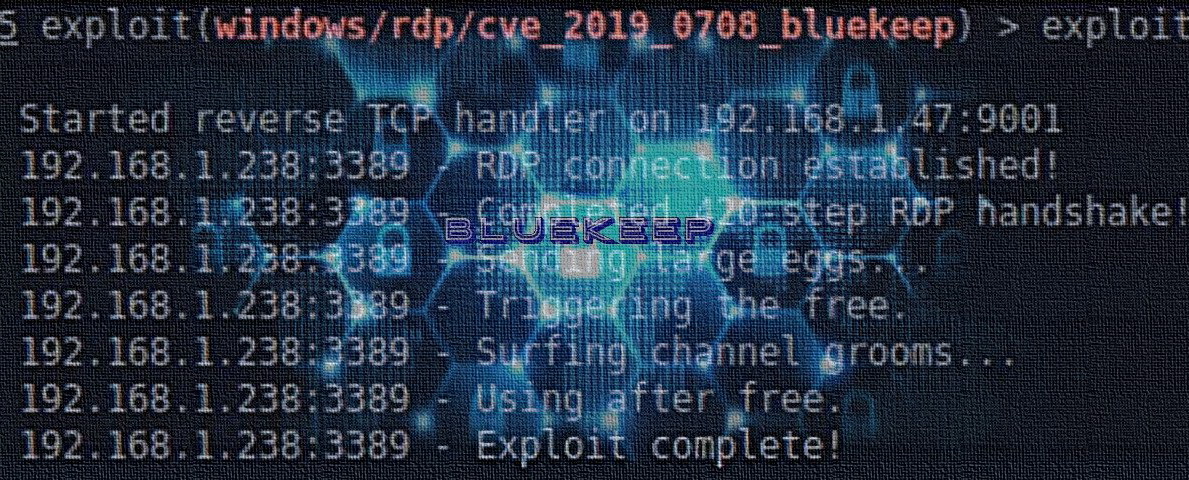
A security researcher under the nick Zerosum0x0 created module for the Metasploit framework that exploits the BlueKeep vulnerability on Windows XP, 7 and Server 2008.
BlueKeep (CVE-2019-0708) is a “worm-like” vulnerability that allows causing a wave of mass malware infections, similar to WannaCry attacks in 2017. The problem affects Remote Desktop Services in Windows 7, Server 2008, Windows XP and Server 2003, but the Remote Desktop Protocol (RDP) itself is not affected. Microsoft released a fix in the middle of last month.For computers that cannot be interrupted for restart, available a micropatch.
Zerosum0x0 has not yet published its module for Metasploit due to the threat it may pose to a huge number of systems that have not been updated yet.
However, the researcher presented a video demonstrating the successful operation of BlueKeep on Windows 2008. As shown in the video, after extracting the credentials using Mimikatz, you can gain complete control over the system.
“Same exploit works for both Windows 7 and Server 2008 R2 as the two operating systems are essentially identical, besides some extra programs on the server”, — reported researcher.
Although BlueKeep also affects Windows Server 2003, the Metasploit team could not run it on this OS.
Zerosum0x0 is a member of the Metasploit project. In addition to creation BlueKeep exploit, he also developed the Metasploit module for scanning systems for vulnerabilities.
“The severity of BlueKeep is critical (9.8 out of 10) because leveraging it does not require user interaction and allows malware to spread to vulnerable systems as WannaCry did in 2017”, — Microsoft warns users.
State of things is so serious that the NSA joined Microsoft in the warnings.
- Block TCP Port 3389 at your firewalls, especially any perimeter firewalls exposed to the internet. This port is used in RDP protocol and will block attempts to establish a connection.
- Enable Network Level Authentication. This security improvement requires attackers to have valid credentials to perform remote code authentication.
- Disable remote Desktop Services if they are not required. Disabling unused and unneeded services helps reduce exposure to security vulnerabilities overall and is a best practice even without the BlueKeep threat.
Source: https://www.bleepingcomputer.com
